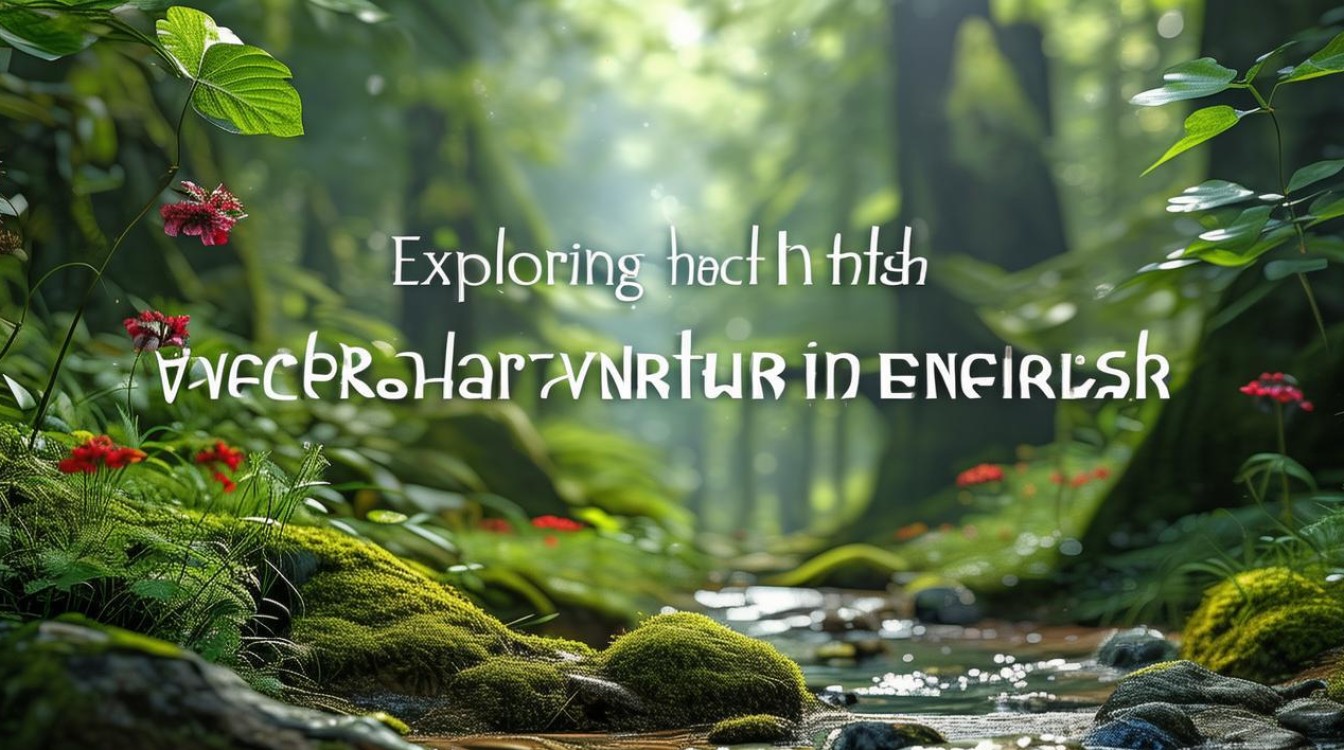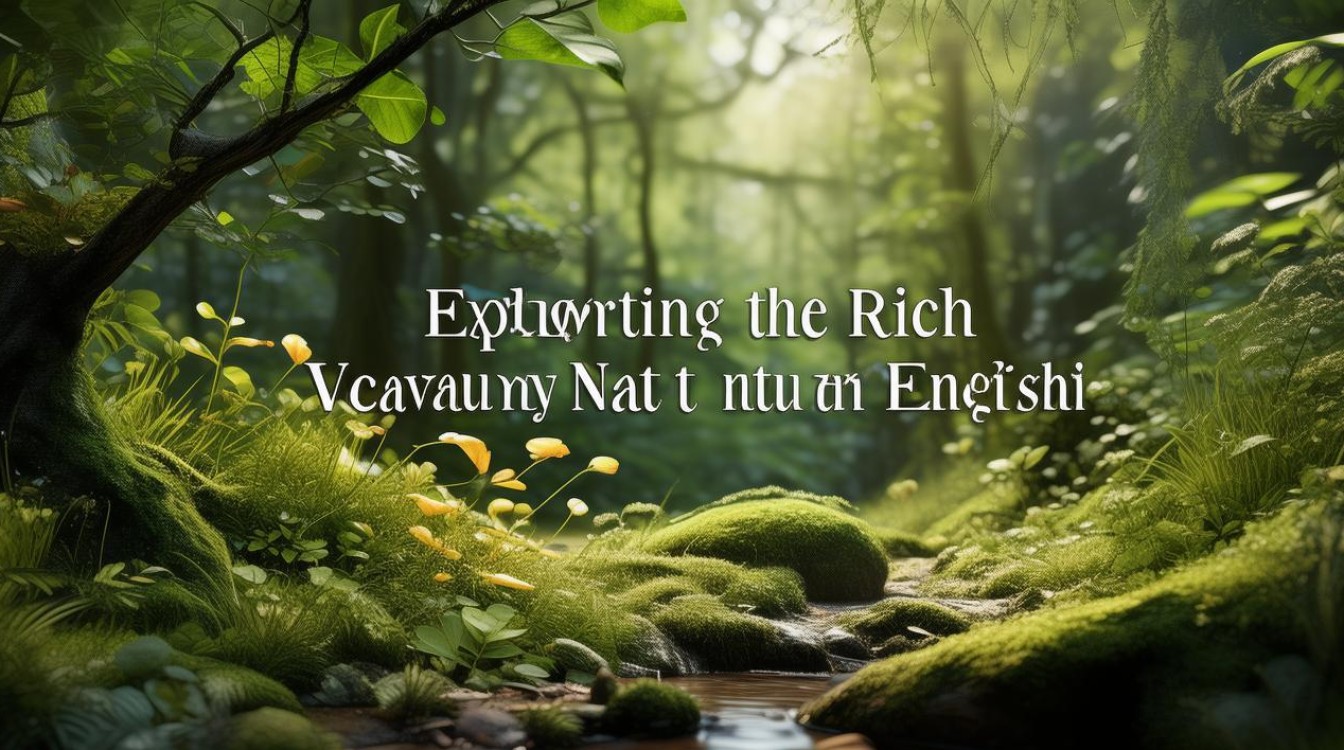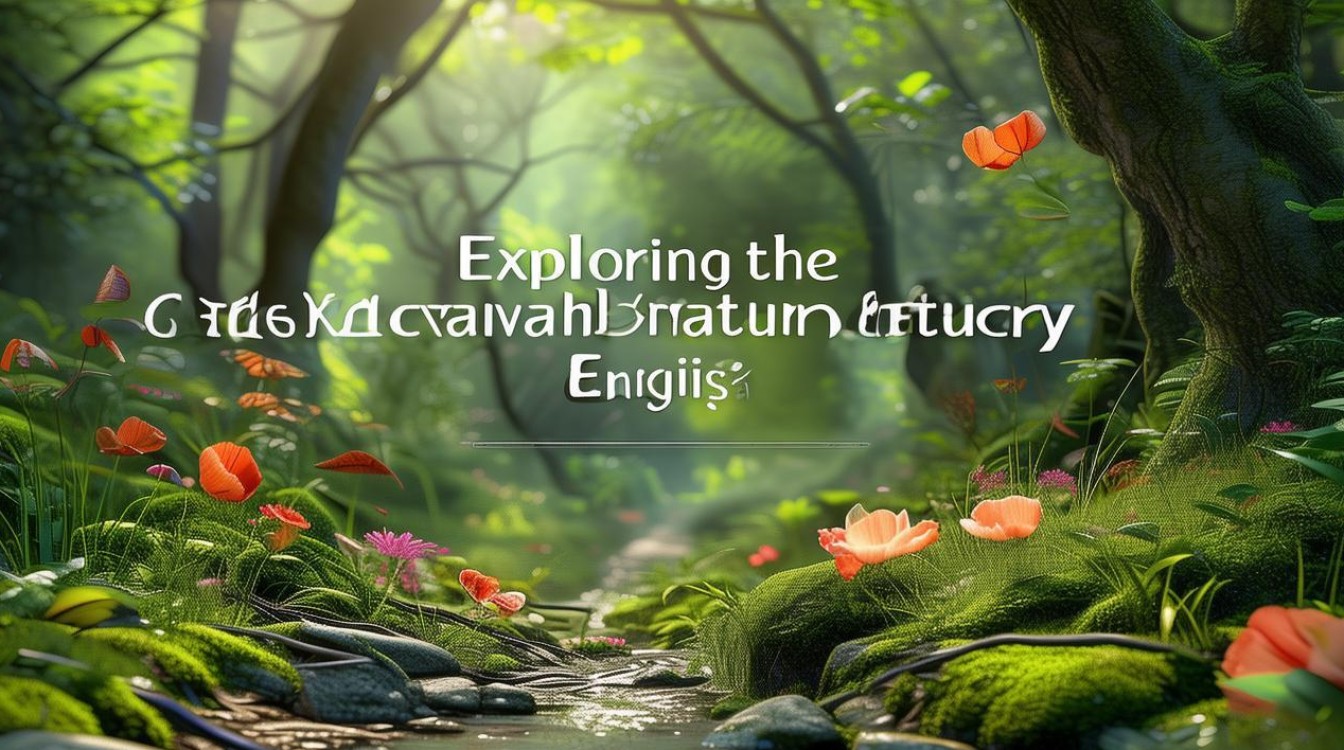The natural world is a treasure trove of beauty, complexity, and inspiration. For English learners, mastering nature-related vocabulary not only enhances language skills but also deepens appreciation for the environment. This article delves into essential words and phrases, organized by categories like flora, fauna, landscapes, and weather, to help you describe the wonders of nature with precision and flair.

Flora: The Green Kingdom
Plants form the foundation of ecosystems, and English offers a diverse lexicon to describe them:
- Tree: A perennial plant with an elongated stem (trunk) supporting branches. Examples: oak, maple, willow.
- Shrub: A small-to-medium woody plant, shorter than a tree (e.g., rosemary, lavender).
- Flower: The reproductive structure of flowering plants (rose, sunflower, orchid).
- Fern: A non-flowering plant with feathery fronds, thriving in shady areas.
- Moss: A soft, green, non-vascular plant growing in damp environments.
Idioms & Phrases:
- "Blossom into" (to develop successfully): Her confidence blossomed after joining the team.
- "Turn over a new leaf" (to start fresh): After the setback, he decided to turn over a new leaf.
Fauna: The Animal Kingdom
From tiny insects to majestic mammals, animals captivate our imagination. Key terms include:
- Mammal: Warm-blooded vertebrates with hair/fur (e.g., dolphin, tiger, human).
- Avian: Relating to birds (eagle, sparrow, penguin).
- Reptile: Cold-blooded, scaly animals (snake, turtle, lizard).
- Amphibian: Creatures living both in water and on land (frog, salamander).
- Invertebrate: Animals without a backbone (butterfly, octopus, earthworm).
Fun Fact: The platypus is one of the few egg-laying mammals, defying simple classification.

Landscapes: Earth’s Varied Faces
Nature’s terrain ranges from towering mountains to serene valleys:
- Mountain: A large landform rising above surroundings (Himalayas, Andes).
- Valley: A low area between hills/mountains, often with rivers.
- Desert: An arid region with minimal rainfall (Sahara, Mojave).
- Forest: Dense tree-covered land (rainforest, boreal forest).
- Wetland: Water-saturated areas like marshes or swamps.
Metaphorical Use:
- "Mountain to climb" (a big challenge): Finishing this project feels like a mountain to climb.
Weather & Climate: Nature’s Moods
Weather vocabulary helps describe atmospheric conditions:
- Sunny: Clear skies with abundant sunlight.
- Overcast: Fully cloud-covered sky.
- Drizzle: Light rain falling in fine drops.
- Blizzard: A severe snowstorm with strong winds.
- Humidity: The amount of water vapor in the air.
Proverb: "After rain comes sunshine"—hardship is often followed by better times.

Ecosystems & Conservation
Understanding habitats and environmental issues is crucial:
- Biodiversity: The variety of life in a particular ecosystem.
- Deforestation: Large-scale tree removal, harming ecosystems.
- Endangered: Species at risk of extinction (panda, polar bear).
- Sustainable: Practices that protect resources for future generations.
Quote: "In every walk with nature, one receives far more than he seeks." —John Muir
Engaging with Nature Vocabulary
To internalize these terms:
- Labeling: Stick notes on household items with nature terms.
- Nature Journaling: Describe outdoor scenes using new words.
- Media: Watch documentaries like Planet Earth with subtitles.
Language is a bridge to understanding the world. By expanding your nature vocabulary, you not only communicate more vividly but also cultivate a deeper connection to the environment. Whether describing a sunset’s hues or debating climate change, these words empower you to engage meaningfully with both English and the planet we share.

The more we learn about nature’s lexicon, the better we articulate its splendor—and the urgency to protect it.


